Chamarajanagar (district) - district of Karnataka, India
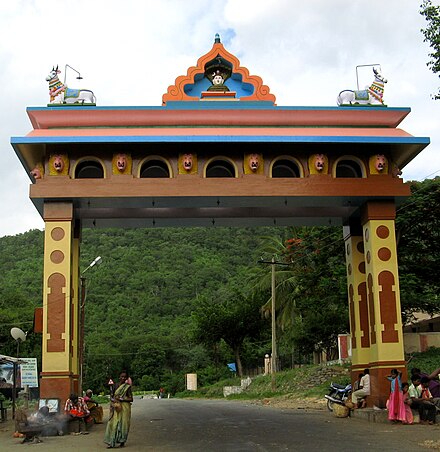
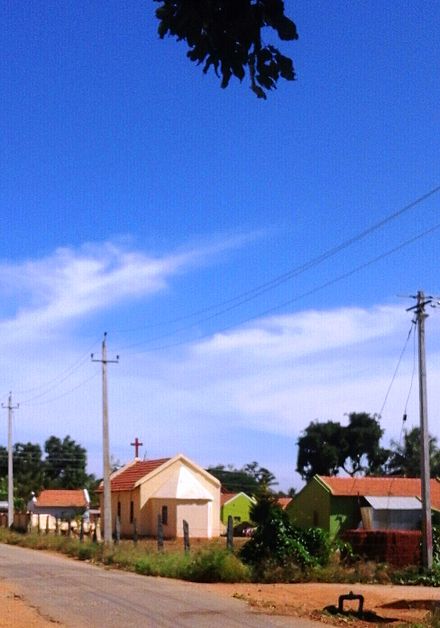
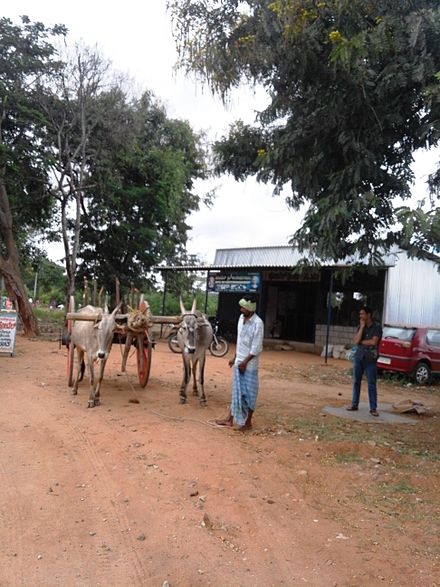
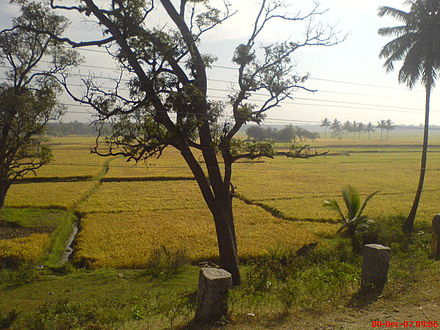
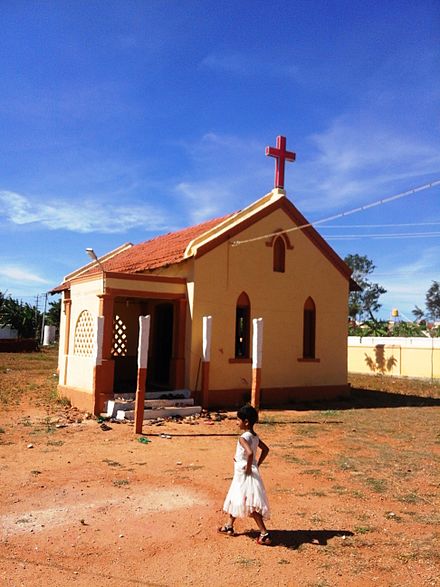 Chamarajanagar is a district in Karnataka State.
Chamarajanagar is a district in Karnataka State.
Cities
Other destinations
-
Biligiriranga Hills 📍 — a wildlife sanctuary and is also known as B R Hills
Understand
It is just because the 9th Chamaraja Wodeyar (1774-1796 CE), one of the kings of Mysore, was born here.
Get in
By road
From the state capital Bangalore, the State Highway 17 can be used to reach Chamarajanagar via Mysore, Chamarajanagar is at a distance of 65 km from Mysore. The distance from Bangalore to Chamarajanagar is about 185 km. The Bangalore-Kanakapura-Kollegal-Chamarajanagar road can also be used with the distance being the same. Chamarajanagara district is connected to Tamil Nadu by National Highway 948. This highway connects Coimbatore, Satyamangalam, Hasanuru to Chamarajanagara. The Karnataka state highways 38 (SH-38) connects Kollegala town to Germalam, a village near Karnataka border. The Karnataka state highway 79 (SH79) connects town of Kollegala to border village Palar via Male Mahadeshwara Betta. There is road from Hanur in Chamarajanagar district to Anthiyur in Tamil Nadu via Ramapura and Burgur. Traffic in above mentioned state highways is sparse and through dense forests without much facility for refreshing and refuel.
By rail
Chamarajanagar has a railway station. Some long-distance trains come to Chamarajanagar. The Tirupati Express (214) is the only long route train from Chamarajanagar.
Mysore, 61 km away, is well connected by railway to major cities in India.
The project to construct a new railway line from Chamarajanagar to Satyamangalam, Gobichettipalayam, Erode is progressing slowly. It will reduce the distance between Bangalore and Chamarajanagar and other cities of Tamil Nadu. The proposal to extend the railway line further to Mettupalayam in Tamil Nadu has not been got environmental clearance.
By air
The nearest airport is at Bangalore. The airports at Coimbatore or Calicut are more distant but can be used for reaching Chamarajanagar. Once opened the airport at Mysore will be the nearest.
Get around
See
- Bandipur National Park, 11.661667°, 76.627222°. One of India's best known animal reserves and tiger habitats.
- Dzogchen Monastery, +91 8225 273-247. Dhondenling Tibetan Settlement, Odeyarpalaya, Kollegal Taluk. A large monastery in the Nyingma Tradition of Tibetan Buddhism.
- Flower Farms of Gundelpet You can see acres and acres of sunflower and other varieties of flowers farmed by the local farmers during rainy seasons. The locality is very photogenic and is in between Gundlept and the Kerala Main Road.
- Hogenakal Falls (Hogenakkal Falls). Located in Kollegal Taluk.
- Himavad Gopalaswamy Betta. A hill in Bandipur National Park. There is a temple at the peak, and is well known for its wild life, including elephants. From Gundalpet, you have to reach Hangala village first, which is 8 km away. Then you have to travel another ten kilometres to reach the road to the temple. Vehicles are not allowed on the last five-kilometer stretch, and you have get into one of the forest department buses escorted by armed guards.
- Male Mahadeshwara Betta . It is an important piligrim centre for Hindus. The temple of Lord Mahadeshwara swami is located here.
Do
Eat
- Hotel Bhagya Vegetarian, Chamarajanagar.
- Mayura Vegetarian, on the right hand side of the KSRTC bus station.
Drink
Stay safe
Bharat Sanchar Nigam Limited (B.S.N.L) provides mobile signal connectivity here. Do not go inside the national park or reserved forest area without the permission of Karnataka forest department. Many of roads traverse through forest area having wild animals and hence it is advisable not to get down from the vehicle, feed them or shout at wild animals. Fill the fuel tank of your vehicle before travel so that you are not stranded in remote areas of the Chamarajanagara district.
Go next
Konanur village
Konanur can be accessed by bus by getting down at Hegguvadi gate and taking the left road. This junction also has access to villages like Mukkadahalli and Kanagagiri. Another option is to travel by train from Mysore. The southern end of the platform is the exact beginning of the village and you can find a level crossing here. When you turn left and explore the village, the first landmark is a government primary school called padashala in Kannada. There is one village council or panchayat office here with the Indian national flag flying on it. The road takes you to a small tea shop with wooden benches and the village atmosphere inside. Food is cooked with wood and the people sit and chat in a friendly manner. The teashop sells tea, idlis and pooris for breakfast and closes by ten o’clock. Maybe they open again by evening. There is one small shop attached to the tea shop where a lady sells bananas and provisions. When you move further from the teashop, you reach the village center with a big tree and cemented seating place where the elders sit and chat. The village has no bus facility and feels quite alienated from outside influences. When you take the right turn from the village center, you reach a lake or what is locally called the Kere. There are four temples in front of the lake and the smaller one is very cute. Another temple has a bull over it and looks very photogenic in the mornings when the sunlight falls on it. When you come back to the village center and take the right diversion, you have another hundred meters of houses and the village ends with an old temple and an attached little cubicle like temple outside. There is a second railway level crossing on the Mysore side of the station. When you cross the railway track and come to the other side of the village, there are big papaya farms, banana farms and potato farms. A new white building is coming here and it looks like a school. The farm has a road in the middle which takes you to the highway.
Kavalande Village
Kavalande is a cluster of three picturesque villages called Dodda-Kavalande, Chikka-Kavalande and K.R. Puram. When you come from Mysore, the easiest way to reach Kavalande is to take a train from Mysore to Chamarajanagar. There are trains at 4:50AM, 7:10AM, 8:50AM, 12:20PM and 2:40PM. These trains are slow trains or what is called in India ‘’Passenger trains’’. When you reach Kavalande railway station, Dodda Kavalande is at a short distance of 300 m. There is only one restaurant here and that is at K.R. Puram junction around one kilometre on Chamarajanagar route. But many tea shops and bakeries serve coffee and buns. There is one police station, one branch of Indian Overseas Bank and one post office in the very heart of the village. The road on the back of the police station takes you to the Muslim section of the village with its mosques and madrassas. You can also find a little temple where tree worship is practiced. You can visit Chikka-Kavalande village by taking an autorikshaw and paying ₹50 to take you across the railway gate. This little village has a big temple and a little primary school. Another 2 km away is the Devanur village with its big temple and Math. Coming back to the village center at Dodda Kavalande, you can visit K.R. Puram by autorikshaw. This third village has one Math, one little temple and one ancient stone temple. The people of K.R. Puram are from higher caste Hindu and have a refined and clean lifestyle in spite of being villagers.
Chamarajanagar district
Karnataka
Primary administrative division